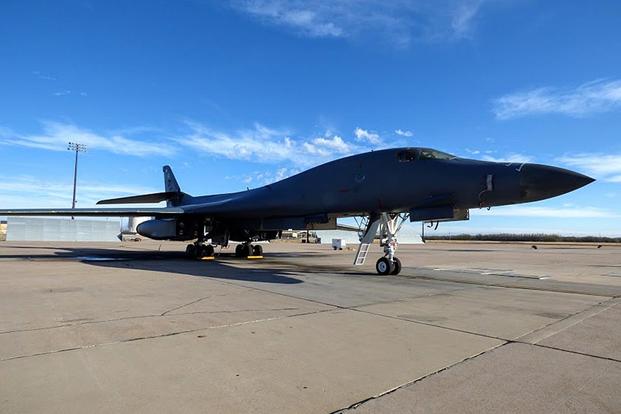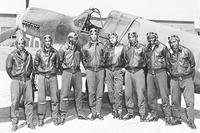The Air Force's June 7 fleetwide stand-down of the B-1B Lancer fleet continues, as news emerges of yet another emergency landing by a bomber.
A B-1 from Dyess Air Force Base, Texas, experienced an in-flight emergency June 1 minutes after taking off from Joint Base Pearl Harbor-Hickam, Hawaii, 7th Bomb Wing spokeswoman 2nd Lt. Kali L. Gradishar confirmed to Military.com. The news was first reported by Air Force Times.
The aircraft returned safely to the base, and the issue was resolved fairly quickly upon return, Gradishar said.
The B-1 involved in the emergency landing was not deployed for operational reasons, an official told Military.com on background. It was on its return flight back to Dyess when the in-flight emergency was called. It remains at Hickam given the ongoing stand-down, the official said.
The 7th Bomb Wing did not release further details on the issue.
The incident on June 1 was minor and per safety checklists, the aircrew determined to return to Hickam, Lt. Col. Uriah Orland, a spokesman for Air Force Global Strike Command, said. The incident, he said, was not related to ejection seat issue that prompted the global B-1 stand-down.
Currently, B-1s are deployed to the Middle East for strike operations and to Europe for a series of summer exercises.
Related content:
- B-1 Crews Prep for Anti-Surface Warfare in Latest LRASM Tests
- Air Force Grounds Entire B-1 Bomber Fleet Over Ejection Seat Concerns
- For B-1s and B2s, Fending Off Retirement in Reserves Would Be Pricey
B-1s rotated out of the Pacific earlier this year, when B-52 Stratofortress bombers assumed the continuous bomber presence mission in the region in April. The conventional B-1 had conducted the CBP mission for 18 months, its first time in the role since 2006.
Air Force Global Strike Command last week grounded the fleet over safety concerns related to the Lancer's ejection seats.
"During the safety investigation process following an emergency landing of a B-1B in Midland, an issue with ejection seat components was discovered that necessitated the stand-down," command officials said Friday.
Gradishar said service maintenance crews are prioritizing B-1 bombers stationed overseas following last week's stand-down.
While the stand-down remains in effect, the service is making sure replacement parts get to its flyable B-1 bombers "to ensure we continue to support the U.S. Air Forces in Europe and Air Force Central Command regions and mission requirements," Gradishar said in a separate statement Monday.
"It is still too soon to determine a definitive timeline for repair completion across the B-1 fleet," she said, adding the issue remains a "top priority."
"It is known that not all B-1s are affected by the ejection seat system components, though it is still being determined which specific aircraft are affected," she continued. "Also, while parts do exist to fix the system, an inventory is in the process to determine the specific types and number of parts needed to fix all affected aircraft."
The stand-down is a direct result of the emergency landing a Dyess B-1 made May 1 at Midland Airport in Texas, officials told Military.com at the time.
A Safety Investigation Board into the ejection seat component is ongoing. The board follows a separate investigation into the emergency landing at Midland.
That incident occurred around 1:30 p.m. local time May 1. Local media reported at the time the B-1B from Dyess was not carrying weapons when it requested to land because of "an engine flameout."
-- Oriana Pawlyk can be reached at oriana.pawlyk@military.com. Follow her on Twitter at @Oriana0214.










